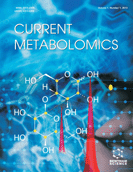Abstract
Background: Acute myocardial infarction (AMI) is a serious medical emergency and leading cause of cardiac-related deaths worldwide. The devastating outcome is sudden death of the patient within first few hours from the onset of symptoms. The rapid detection of physiological transformations associated with AMI coupled with instant treatment to reset these changes and monitoring response to treatment can greatly decrease the mortality and morbidity of patients.
Objective: To establish the early hour metabolomic signatures in the sera of AMI patieints. Methodology: Metabolic profiles of sera collected from 42 AMI patients (immediately after the myocardial infarction) and 38 age/sex matched normal controls were obtained using high-resolution 1D 1H CPMG and diffusion edited NMR spectra. The metabolic profiles were compared using multivariate statistical analysis to identify the disease specific metabolic disturbances associated with AMI and, therefore, the perturbed biochemical pathways in this condition. Results: Our results revealed significant metabolic perturbations in AMI compared to control cohorts. The upregulated metabolites in AMI condition include arginine, glycine, tyrosine, phenylalanine, glucose, creatine, creatinine, lactate, N-acetyl glycoproteins and phospholipids, while the levels of amino acids (such as valine, alanine, glutamate, glutamine, threonine and methionine), citrate, acetone, choline, glycero-phosphocholine, trimethylamine-N-oxide and lipids/fatty acids were decreased. Receiver operating curve characteristics (ROC) confirmed the robustness and validity of these metabolic markers. Conclusion: The resulted metabolic profiling provided new insights into the metabolic processes involved in acute myocardial infarction. Further, we foresee that these changes would aid rapid clinical evaluation of myocardial infarction in emergency and its timely management.Keywords: Acute myocardial infarction, 1H NMR, serum metabolomics, metabolic signatures.
 14
14 2
2 1
1 1
1


















